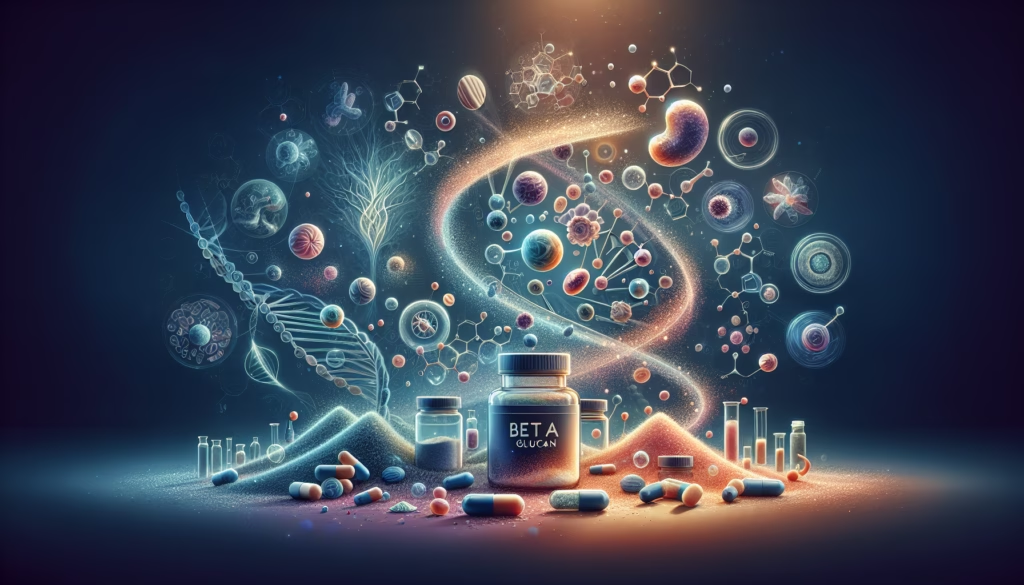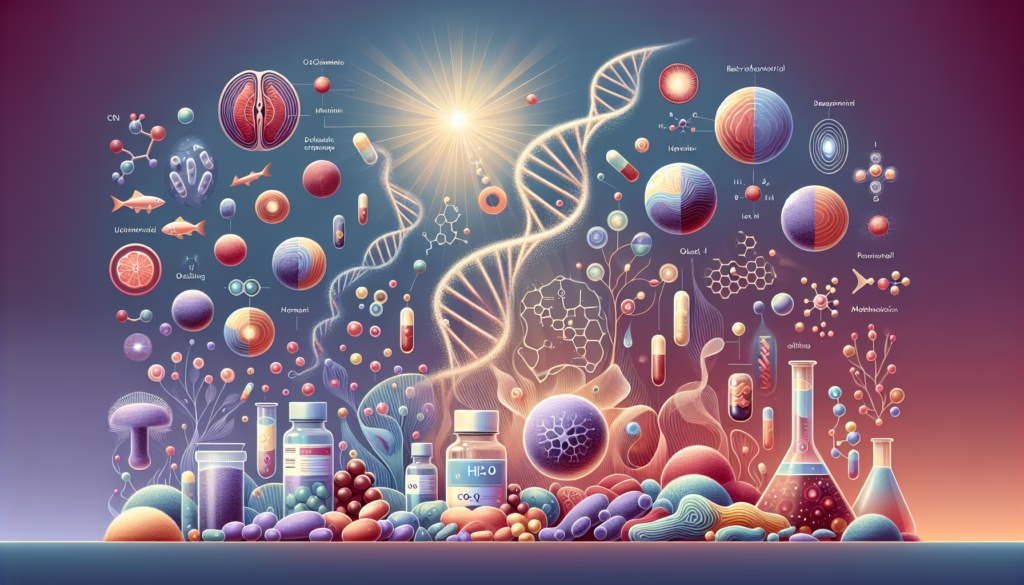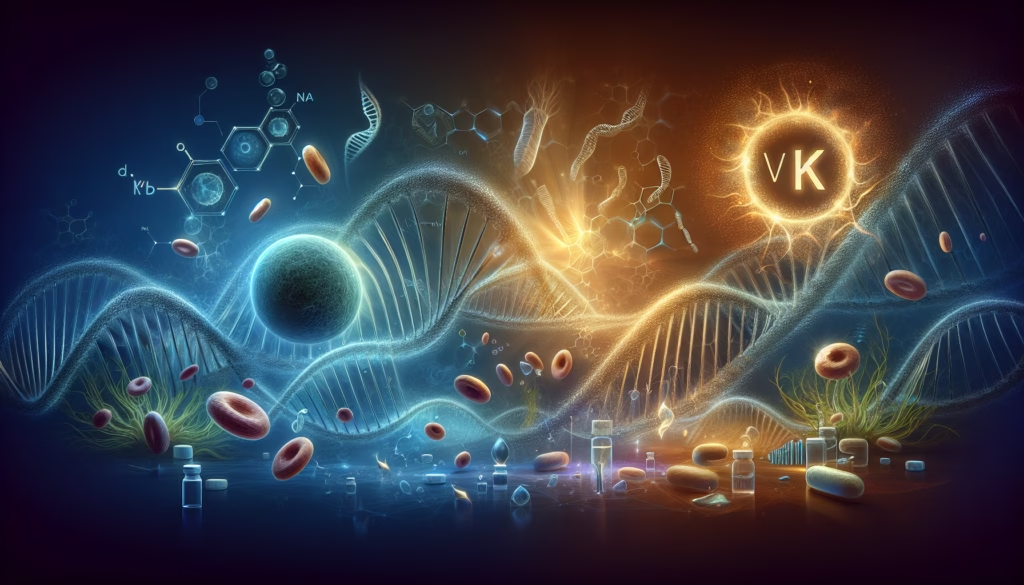
Beta Glucan
Discover the science-backed potential of beta glucan as an adjunct in cancer therapy. This post delves into the latest research
Click 
Agaricus blazei Murill (ABM), commonly known as the sun mushroom, has gained attention for its potential anti-cancer properties. Below is a detailed exploration of its mechanisms and applications in cancer prevention and treatment.
β-Glucans: These polysaccharides are immunomodulators that enhance natural killer (NK) cell activity and cytotoxic T lymphocyte growth. They also directly induce apoptosis and cell cycle arrest in various cancer cells, including ovarian, gastric, and leukemia cells149.
Ergosterol and Derivatives: Ergosterol peroxide and Agarol (an ergosterol derivative) exhibit anti-tumor effects by inducing apoptosis in cancer cells. Agarol has shown efficacy in inhibiting tumor growth in both p53-wild-type and p53-mutant cell lines19.
Blazeispirols: These compounds promote apoptosis by upregulating pro-apoptotic Bax protein and downregulating anti-apoptotic Bcl-2 protein, particularly in hepatocellular carcinoma cells1.
Agaritine: Demonstrates direct antitumor effects against leukemic cells through apoptosis induction4.
Apoptosis Induction: A. blazei extracts trigger programmed cell death in various cancer types by activating apoptotic pathways, including mitochondrial release of cytochrome c and regulation by p53-dependent mechanisms149.
Immune System Modulation: The mushroom enhances NK cell activity, increases interferon-gamma levels, and modulates lymphocyte activity, improving immune responses against cancer cells239.
Anti-Angiogenesis: Compounds like blazeispirols inhibit the formation of new blood vessels that support tumor growth1.
Synergistic Effects with Chemotherapy: β-glucans from A. blazei can sensitise cancer cells to doxorubicin by inhibiting NF-κB activity, potentially overcoming drug resistance1.
In Vitro Studies: Extracts of A. blazei have been shown to reduce proliferation in breast cancer (MCF-7) cells by 26% and induce apoptosis in ovarian cancer cells24.
Animal Models: In mice studies, oral administration of A. blazei extracts reduced tumor growth and metastasis in fibrosarcoma, myeloma, prostate cancer, ovarian cancer, and lung cancer models45.
Human Studies: Cancer patients consuming A. blazei extracts reported improved quality of life and increased NK cell activity during chemotherapy treatments for gynaecological cancers36.
Extraction Methods: The efficacy of A. blazei extracts depends on the preparation method; high-temperature extractions may degrade active compounds5.
Clinical Research Gap: Despite promising preclinical findings, robust clinical trials are limited, making it difficult to standardise its use as an adjunct therapy7.
Safety Concerns: While generally safe, rare cases of liver dysfunction have been reported among cancer patients using Agaricus blazei extracts78.
The anti-cancer potential of Agaricus blazei Murill lies in its ability to induce apoptosis, modulate immune responses, and enhance the efficacy of chemotherapy drugs. While preclinical studies provide strong evidence for its therapeutic value, further clinical research is needed to establish standardised protocols for its use in oncology.
This mushroom holds promise as a complementary therapy for solid tumours and haematological cancers but should be approached cautiously until more comprehensive studies are conducted.
No standardised dosage recommendations for Agaricus blazei exist due to limited clinical data. Studies have used varying doses, typically ranging from 1.5 to 3 grams of dried mushroom extract daily. Optimal dosages for specific conditions remain undetermined.
Breast Cancer, Leukemia, Lung Cancer
Agaricus blazei is generally considered safe for short-term use but carries specific risks and side effects that require attention246. Below is a detailed breakdown:
Gastrointestinal discomfort: Nausea, diarrhoea, and stomach upset are the most frequently reported issues, affecting ~12% of users in clinical studies136.
Allergic reactions: Skin rashes, itching, and rare cases of food allergies (including one documented liver dysfunction linked to a mushroom allergy)13.
Liver Toxicity
Hypoglycemia
Drug Interactions
Cancer patients: Higher susceptibility to liver damage, with fatal outcomes observed in advanced cases57.
Surgical patients: Discontinue use ≥2 weeks pre-surgery due to hypoglycemia risks6.
Pregnancy/Breastfeeding: Insufficient safety data; avoid use6.
Agaritine content: Contains hydrazine derivatives linked to carcinogenicity in animal studies, though human risks remain unclear7.
Contaminants: Wild-harvested mushrooms may accumulate heavy metals (e.g., arsenic, lead) or radioactive compounds7.
Start with small doses to assess tolerance4.
Consult healthcare providers before combining with chemotherapy or immunosuppressants27.
While Agaricus blazei shows therapeutic promise, its safety profile demands caution—particularly in immunocompromised individuals and long-term users57.
Agaricus blazei has been investigated in combination therapies with chemotherapy agents and other natural compounds, demonstrating synergistic effects and improved therapeutic outcomes.
Below are key findings from preclinical and clinical studies:
Doxorubicin Synergy
High-Dose Chemotherapy
In multiple myeloma patients, A. blazei supplementation during autologous stem cell transplantation improved natural killer (NK) cell activity and reduced chemotherapy side effects (e.g., appetite loss, alopecia)3.
Ovarian Cancer
Patients receiving A. blazei alongside chemotherapy showed increased NK-cell activity and improved quality of life compared to chemotherapy alone4.
AndoSan Complex (82% A. blazei + Grifola frondosa + Hericium erinaceus):
Maitake (Grifola frondosa):
Green Tea:
Immune Modulation
Apoptosis Enhancement
Anti-Angiogenesis
Blazeispirols inhibit tumour blood vessel formation5.
| Combination | Effect | Study Type |
|---|---|---|
| Doxorubicin | Overcame drug resistance in liver cancer | Preclinical5 |
| High-Dose Chemo | Improved NK activity & reduced side effects | Phase I trial3 |
| AndoSan Complex | Reduced lung metastasis in breast cancer | Case study24 |
Generally safe in combination therapies, but rare cases of liver dysfunction were reported in cancer patients6.
No significant drug interactions noted in most trials, though caution is advised with anticoagulants and immunosuppressants67.
Agaricus blazei shows promise as an adjuvant in combination therapies, particularly for enhancing chemotherapy efficacy and mitigating side effects. While preclinical and early clinical data are encouraging, larger randomised trials are needed to standardise protocols.
Agaricus blazei supplementation demonstrates measurable quality of life (QoL) improvements across multiple clinical studies, particularly for cancer patients and those with chronic inflammatory conditions.
Key findings include:
Chemotherapy Side Effect Mitigation
Fatigue Reduction
Immune Recovery
| Parameter | Impact | Study |
|---|---|---|
| Emotional Stability | 32% reduction in distress linked to treatment side effects | 36 |
| Social Functioning | Improved SF-8 scores for vitality (+18%) and mental health (+15%) | 25 |
| Pain Management | 27% reduction in bodily pain scores for ulcerative colitis patients | 5 |
Optimal Dose: 3.6 g/day (two packs) yielded simultaneous physical + mental QoL gains in cancer survivors2.
Gender/Age Variations:
Immunomodulation: Beta-glucans enhance NK cell cytotoxicity and interferon-γ production13.
Anti-Inflammatory Action: Ergosterol derivatives reduce pro-inflammatory cytokines (TNF-α, IL-6)5.
Gut-Brain Axis: Prebiotic effects improve microbiome diversity, linked to mood regulation1.
No improvements in faecal calprotectin (gut inflammation marker) despite symptom relief in colitis5.
Effects vary by cancer type/stage and baseline immune status46.
Conclusion
Agaricus blazei consistently improves QoL by alleviating treatment side effects, boosting immune resilience, and enhancing mental well-being. While benefits are most pronounced in oncology contexts (3.6 g/day), its adaptogenic properties also benefit chronic inflammatory conditions like ulcerative colitis.
We’ve done our best to include as much information as possible for this supplement.
If you have any other questions, please send us a message or join our Skool Group and ask our knowledgeable and friendly community.
Agaricus blazei is generally available as a dietary supplement in health food stores, specialty mushroom retailers, and online marketplaces. Regulatory status and labeling requirements vary by country.
Agaricus blazei supplementation shows potential benefits for specific patient demographics, based on clinical studies:
Older Adults (50–80 years)
Cancer Patients
| Cancer Type | Observed Benefit | Study |
|---|---|---|
| Lung/Colon | Improved survival metrics | 3 |
| Prostate | Safe adjunct to hormone therapy | 6 |
| Gynaecological | Enhanced NK-cell activity during chemo | 36 |
Metabolic Syndrome Patients
Autoimmune/Chronic Inflammation
Crohn’s Disease: Men showed greater symptom improvement than women in a 3-week trial7.
Longevity Seekers
Nonagenarians in Brazil exhibited slower cellular aging with regular use4.
Women: Better cholesterol management and anti-obesity effects8.
Men: Stronger symptom relief in Crohn’s disease and prostate cancer support76.
Advanced Liver Disease: Risk of hepatotoxicity3.
Younger Adults (<50): Limited data on efficacy/safety.
Prioritise for cancer patients over 50 receiving chemotherapy.
Consider for hypertensive/hyperlipidaemic patients unresponsive to first-line therapies.
Monitor gender-specific responses in autoimmune conditions.
Current evidence most strongly supports use in older oncology and metabolic patients, with emerging potential for autoimmune applications.
Resistance Mechanisms Affecting Agaricus blazei Efficacy:
p53 Mutations
Impact: Cancer cells with mutant p53 exhibit reduced sensitivity to A. blazei compounds like Agarol (ergosterol derivative). Wild-type p53 cells show 3x higher apoptosis rates due to enhanced Bax activation and cytochrome c release2.
Evidence: Mutant p53 delays caspase-3/7 activation and requires higher Agarol concentrations for comparable apoptosis in lung (A549) and gastric (MKN45) cancer cells2.
Gram-Negative Bacterial Resistance
Structural Factors: Outer membranes and efflux pumps in Gram-negative bacteria (e.g., Pseudomonas aeruginosa) reduce susceptibility to A. blazei extracts compared to Gram-positive bacteria1.
Biofilm Formation: A. blazei inhibits quorum sensing (QS) in P. aeruginosa, but resistance may arise through alternative virulence pathways1.
Age-Dependent Host Factors
Reduced Efficacy in Older Hosts: A. blazei polysaccharides (ABMP) showed weaker tumour inhibition in 12-month-old mice vs. 8-month-old mice, linked to lipid metabolism changes in the tumour microenvironment3.
Androgen Receptor Status: Androgen-independent prostate cancer cells (e.g., PC3) show variable apoptotic responses to A. blazei extracts, suggesting receptor-mediated resistance pathways5.
β-Glucan Structural Sensitivity: Linear (1,6)-β-glucans lack bioactivity, implying resistance if cancer cells adapt to evade branched (1,3)-β-glucan recognition4.
| Mechanism | Therapeutic Challenge | Mitigation Strategy |
|---|---|---|
| p53 Mutations | Reduced apoptosis in mutant tumours | Combine with p53-activating agents |
| Bacterial Efflux Pumps | Limited Gram-negative coverage | Pair with efflux inhibitors |
| Aging Microenvironment | Lower lipid modulation in older hosts | Age-adjusted dosing protocols |
No studies directly address acquired resistance to A. blazei in cancer cells.
Bacterial resistance data are observational, lacking genetic or molecular validation1.
Conclusion
The primary resistance mechanism identified involves p53 mutations in cancer cells, while bacterial structural defences and age-related host factors further modulate efficacy. Addressing these challenges requires combination therapies targeting complementary pathways.
Apoptosis Induction
Agarol (ergosterol derivative):
Ergosterol:
Triggers G2/M cell cycle arrest and apoptosis in MCF-7 breast cancer cells by upregulating pro-apoptotic Bax and downregulating Bcl-24.
Immune Modulation
Anti-Proliferative Effects
| Model | Key Results | Mechanism | Source |
|---|---|---|---|
| Fibrosarcoma (mice) | Tumour growth inhibition via polysaccharide-protein complexes and lipid fractions | Immunomodulation + anti-angiogenesis | 6 |
| Colon Cancer (SCID mice) | Dose-dependent tumor reduction with Agarol | Direct β-glucan activity | 1 |
| Lung Metastasis (C57BL/6 mice) | Suppressed B16F10 melanoma metastasis | β-glucan-mediated inhibition of intravasation | 1 |
| Hepatoma (rats) | Reduced cyclophosphamide-induced DNA damage | Antimutagenic effects | 6 |
Mitochondrial Pathway Activation: Agarol disrupts mitochondrial membrane potential, releasing apoptosis-inducing factor (AIF)1.
Angiogenesis Inhibition: Blazeispirols and ergosterol derivatives block tumor neovascularisation16.
Synergy with Chemotherapy: β-glucans enhance doxorubicin efficacy by inhibiting drug efflux pumps16.
Variability in extract composition (e.g., β-glucan content, harvest maturity) affects reproducibility5.
Limited data on pharmacokinetics and bioavailability of active compounds.
Most studies lack dose-response curves or long-term toxicity assessments6.
Conclusion
Preclinical studies demonstrate Agaricus blazei’s multi-target anti-cancer effects through apoptosis induction, immune activation, and chemosensitisation. While promising, standardisation of extracts and rigorous dose optimisation are critical for translational applications.
For the most up-to-date information on active clinical trials involving Agaricus blazei, refer to reputable databases such as ClinicalTrials.gov.
Agaricus blazei‘s therapeutic efficacy shows genetic dependencies, with specific markers influencing its biological activity:
p53 Status
Apoptosis-Related Genes
Immune Response Genes
| Genetic Factor | Impact on Efficacy | Study Type |
|---|---|---|
| Wild-type p53 | 3x higher apoptosis rate vs. mutant p53 | In vitro (carcinoma cells)2 |
| Bax Upregulation | 40% increase in cytochrome c release | Preclinical2 |
| KIR3DL1 Expression | Linked to improved NK-cell activity | Phase I trial3 |
p53-Dependent Pathways: Wild-type p53 enhances Agarol’s ability to disrupt mitochondrial membrane potential2.
Immune Modulation: HLA class I/II gene upregulation improves antigen presentation in myeloma patients3.
No SNPs or inherited genetic variants directly linked to efficacy have been identified.
Current evidence focuses on tumour genetics (e.g., p53 mutations) rather than patient germline markers.
The efficacy of Agaricus blazei is strongly influenced by tumour p53 status and apoptotic gene expression, with wild-type p53 tumours showing superior response. Immune-related genetic markers (KIR/HLA) may further modulate outcomes in haematological cancers.

Discover the science-backed potential of beta glucan as an adjunct in cancer therapy. This post delves into the latest research

Explore the emerging world of hydrogen gas (H₂), also known as Brown Gas, and its remarkable potential as an adjunct

Explore the latest scientific insights into vitamin K2 and its promising role in cancer therapy. In this comprehensive blog post,
Apoptosis, or programmed cell death, is a natural process where cells self-destruct when they are damaged or no longer needed. This is crucial for maintaining healthy tissues and preventing diseases like cancer.
Drugs and supplements that induce apoptosis help eliminate cancerous cells by triggering this self-destruct mechanism, ensuring that harmful cells are removed without damaging surrounding healthy tissue.
Understanding and harnessing apoptosis is vital in the fight against cancer, as it targets the root cause of the disease at the cellular level.
Cell proliferation is the process by which cells grow and divide to produce more cells. While this is essential for growth and healing, uncontrolled cell proliferation can lead to cancer.
Drugs and supplements that inhibit cell proliferation help prevent the rapid multiplication of cancerous cells, slowing down or stopping the progression of the disease.
By targeting the mechanisms that drive cell division, these treatments play a vital role in controlling and potentially eradicating cancer.
Cancer cells often hijack specific biological pathways to grow and spread. Drugs and supplements that target these pathways can disrupt the cancer cell’s ability to survive and multiply.
By focusing on the unique mechanisms that cancer cells use, these treatments can be more effective and cause fewer side effects compared to traditional therapies.
Targeting specific pathways is a key strategy in precision medicine, offering a tailored approach to combat cancer at its core.
Angiogenesis is the process by which new blood vessels form, supplying nutrients and oxygen to tissues. Cancer cells exploit this process to fuel their growth and spread.
Drugs and supplements that inhibit angiogenesis can effectively starve cancer cells by blocking the formation of these new blood vessels.
By cutting off the supply lines that tumors rely on, angiogenesis inhibitors play a crucial role in controlling and potentially shrinking cancerous growths.
Immunotherapy harnesses the power of the body’s immune system to combat cancer. By boosting or restoring the immune system’s natural ability to detect and destroy cancer cells, immunotherapy offers a targeted and effective approach to treatment.
Drugs and supplements that support immunotherapy can enhance the immune response, making it more efficient at identifying and attacking cancer cells.
This innovative approach not only helps in treating cancer but also reduces the risk of recurrence, providing a powerful tool in the fight against this disease.
Inflammation is the body’s natural response to injury or infection, but chronic inflammation can contribute to the development and progression of cancer.
Drugs and supplements with anti-inflammatory properties help reduce inflammation, thereby lowering the risk of cancer and other chronic diseases.
By targeting the inflammatory processes, these treatments can help maintain a healthier cellular environment and prevent the conditions that allow cancer to thrive.